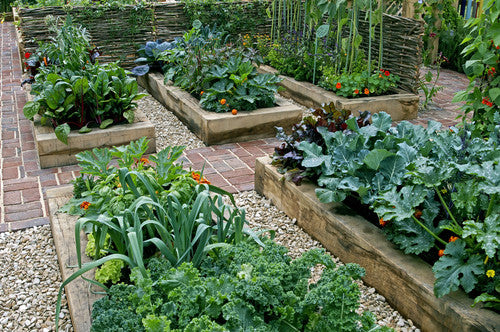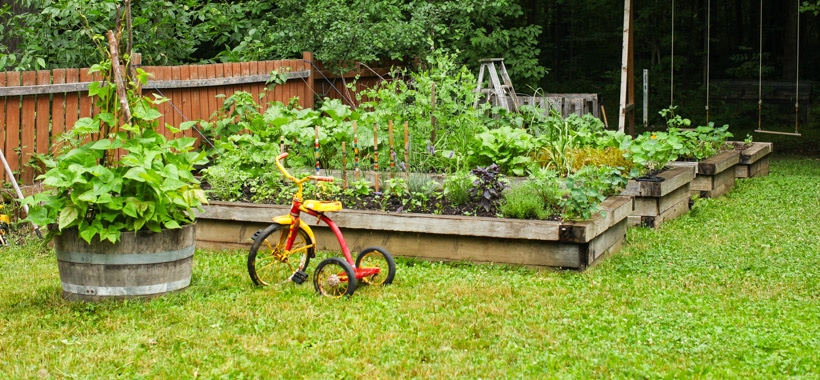Top Crops for a Thriving Homestead Gardening Setup
Top Crops for a Thriving Homestead Gardening Setup
Blog Article
Discover Important Tips for Successful Horticulture Techniques and Practices
Gardening, frequently seen as a simple pastime, includes a variety of techniques and practices that can substantially influence the outcome of your efforts. By focusing on vital components such as soil health, reliable watering methods, and proper plant option, garden enthusiasts can produce a growing community that supports vivid growth. Recognizing the subtleties of insect administration and seasonal maintenance can even more boost performance. Yet, many enthusiasts overlook crucial information that can make or break their horticulture success-- discovering these forgot facets may reveal the secret to cultivating a growing yard.
Understanding Soil Wellness
Dirt health and wellness is a basic element of effective horticulture, as it directly influences plant development, nutrition availability, and ecological community balance. Healthy and balanced soil is characterized by an abundant biodiversity of bacteria, raw material, and a well balanced pH level, which with each other develop an environment favorable to plant development.
To recognize dirt health, one should consider its physical, chemical, and organic homes. The texture and structure of dirt influence its ability to maintain dampness and nutrients, while the chemical composition establishes the availability of important elements like potassium, nitrogen, and phosphorus. Regular soil testing is vital to assess these elements, enabling garden enthusiasts to make enlightened decisions regarding changes and plant foods.
Moreover, promoting biological activity within the soil is important for keeping its wellness. Practices such as composting, plant turning, and making use of cover plants can enhance microbial diversity, improve nutrient cycling, and reduce soil erosion. By prioritizing soil health, gardeners not only optimize plant growth but also add to a lasting ecological community, making certain that their horticulture techniques are eco liable and durable over time.
Efficient Watering Methods
Guaranteeing that plants receive the appropriate quantity of water is essential for their health and wellness and growth, specifically when combined with a strong structure of soil health (Homestead Gardening). Effective sprinkling techniques can substantially affect plant vitality, lowering water wastefulness and promoting optimal growth
One fundamental approach is deep watering, which motivates roots to expand deeper right into the soil, boosting drought resistance. This strategy normally involves sprinkling less often but in bigger quantities, enabling dampness to permeate the origin zone extensively. Timing is also critical; early morning is the excellent time to water, as it reduces dissipation and allows vegetation to completely dry throughout the day, lowering disease dangers.
Additionally, utilizing compost can help keep dirt moisture and control temperature level, further aiding effective sprinkling practices. Using a drip watering system can additionally offer targeted wetness straight to the origins, making sure that water gets to where it's most required while conserving resources.
Monitoring rains and dirt moisture levels can assist changes in your watering timetable, guaranteeing plants receive constant hydration without over-saturation. By adopting these reliable sprinkling techniques, gardeners can foster a flourishing atmosphere for their plants to grow.
Plant Option and Positioning
Exactly how can the best plant choice and tactical Our site placement change a yard into a flourishing community? When selecting plants, think about elements such as climate, dirt kind, and sunlight direct exposure. Homestead Gardening.
Strategic positioning includes organizing plants according to their development behaviors and requirements. Taller plants need to be positioned at the back of borders to prevent shielding shorter plants. Additionally, organizing plants with similar water and light requirements can boost their development and minimize competition for sources.
Integrating a diversity of plants not just adds visual charm but likewise advertises biodiversity, bring in advantageous pests and pollinators. Take into consideration the seasonal adjustments in your garden; select a mix of evergreens, annuals, and perennials to ensure year-round interest.
Finally, remember to analyze the mature dimension of plants before planting to stay clear of overcrowding and make certain sufficient air circulation. Thoughtful plant option and strategic positioning create a harmonious setting, allowing your garden to prosper while reducing obstacles.
Bug and Disease Administration
Reliable insect and illness monitoring is vital for keeping a healthy garden environment - Homestead Gardening. A proactive strategy, combining cultural, organic, and chemical approaches, can considerably minimize the influence of pests and diseases on your plants

Biological controls, such as introducing useful bugs like ladybugs or predatory termites, can maintain bug populaces in check without harming the environment. Additionally, maintaining plant health through proper watering, fertilization, and pruning will certainly strengthen their resilience against diseases.
When intervention is required, select targeted chemical treatments, ensuring to follow application standards to decrease injury to non-target microorganisms. Always prioritize sustainable techniques, as they advertise long-lasting garden health and ecological equilibrium. By incorporating these methods, gardeners can effectively manage illness and insects, guaranteeing flourishing plants and a productive yard.

Seasonal Upkeep Practices
In springtime, focus on dirt preparation by screening pH levels and including required modifications. On a regular basis examine arising plants for illness and insects.
As summer techniques, guarantee ample irrigation while monitoring for indications of stress and anxiety or illness. Trim back overgrown plants to motivate air circulation and decrease moisture around foliage. This method not only improves plant wellness yet also promotes blooming and fruiting.
With the arrival of fall, it's time to get ready for wintertime. Clean up fallen leaves and particles to avoid bug problems, and consider planting cover plants to improve soil health and wellness. This period is additionally perfect for separating perennials and growing spring-flowering bulbs.
Conclusion
Effective gardening joints on the assimilation of sound practices in soil health and wellness, watering, plant option, parasite management, and seasonal maintenance. By prioritizing soil testing and microbial variety, using reliable sprinkling strategies, and selecting discover this suitable plants, gardeners can produce prospering ecosystems. Additionally, aggressive parasite management and attentive seasonal upkeep contribute considerably to Read More Here overall garden vitality. Embracing these techniques fosters a sustainable and productive horticulture setting, making sure thriving development and durability throughout the altering periods.
By focusing on crucial components such as dirt wellness, efficient watering approaches, and proper plant choice, gardeners can develop a growing community that supports vibrant development. By prioritizing dirt health and wellness, gardeners not just optimize plant development however also add to a sustainable community, guaranteeing that their horticulture practices are environmentally accountable and resilient over time.
Taller plants should be placed at the back of borders to stop shading much shorter plants. Tidy up fallen leaves and particles to avoid parasite invasions, and take into consideration planting cover plants to enrich dirt wellness.Successful gardening joints on the integration of sound techniques in soil wellness, watering, plant choice, pest administration, and seasonal upkeep.
Report this page